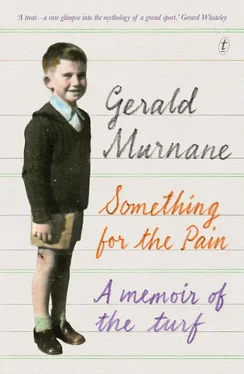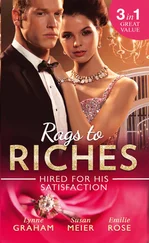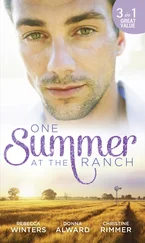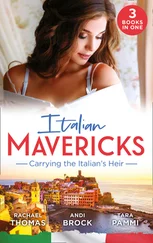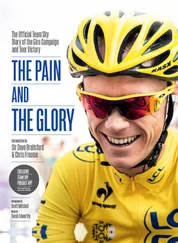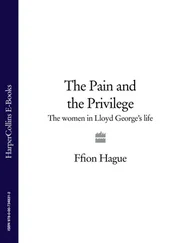My third recurring dream still troubles me sometimes, and I can’t imagine what actual event might bring it to an end. I’m at an important race meeting, and I’m anxious to watch a race that has just begun, according to the on-course sound system. My problem is that the so-called grandstand that I’ve entered in order to gain a view of the race is not your conventional grandstand with rows of terraced seats overlooking the course but a sort of vast castle filled with dining halls and staircases and gloomy corridors and throngs of people who seem unaware that a race meeting is in progress nearby. Sometimes, after struggling through a press of people, I get a glimpse of the racecourse through a narrow slit in the wall of a tower, but mostly I remain ignorant of what I would most like to know.
Gin Lane was a young horse of average ability when I dreamed, in the late 1960s, that he had won the Caulfield Cup. I doubt whether Gin Lane ever started in the Cup, but his full brother Beer Street won the race in 1970.
The setting of my dream about Palatial was one of those nightmarish and labyrinthine buildings where I struggled for a glimpse of race after race. At one point in the dream, I understood that the Melbourne Cup was in progress but I saw nothing of the race. I did hear someone far off in the crowd announcing that Palatial had won but I saw no official results — no judge’s numbers displayed on high and no horses returning to scale.
The year was 1968. My wife and I were still childless and living in a flat in Park Street, Brunswick, overlooking Princes Park. I’d had very little time for reading form guides or race results during this or the previous two years. I was still a primary teacher but I was studying part-time for an arts degree, as was my wife. We seldom went to the races and, because we were saving for a deposit on a house, my bets were few and trifling. When I awoke after my dream about Palatial, I was aware that a horse of that name had raced in Melbourne in recent months but I could not have said whether or not the horse was a stayer or whether it was an entrant in the Melbourne Cup. I learned in time that Palatial was in the stable of A. A. D’Alton and carried the colours White-and-green diagonal stripes, gold sleeves and cap. The horse was a stayer of no more than moderate ability. It had been entered for the Caulfield and Melbourne cups but was among the least qualified of all the entrants and would be lucky to gain entry to either race.
I wish I could recall all the ups and downs of Palatial’s career from June or July, when I first dreamed about him, until he ran in the Melbourne Cup in November 1968. Perhaps what interested me most was the question of why I had dreamed about Palatial in the first place. Every year, even when I was as busy as I was in 1968, I developed an interest in a number of entrants in the big cups and followed their progress during week after week. Palatial would never have been of interest to me if I had not, for some mysterious reason, dreamed of his winning the Melbourne Cup. As I said, he was not even qualified for the Cup when I first investigated him. And yet, he managed to become so. I don’t recall his winning any race during his long preparation for the Cup, but he was placed in several. One such race was the Coongy Handicap at Caulfield, just before the Caulfield Cup. Palatial was required to win or be placed in order to qualify for the cups. He was what a racing journalist might have described as honest or a trier, and he struggled into third place in the Coongy and so remained in contention for the big races. I believe he started in the Caulfield Cup and ran his usual dogged race. He must have run rather well in one or another race leading up to the Melbourne Cup, given that he started at only twenty-five-to-one in the race that stops a nation. The field comprised twenty-six. Equal favourites were Lowland and Arctic Coast at six-to-one. The rank outsider was the Western District horse Dignify at 330-to-one. Palatial, at twenty-five-to-one, was equal fourteenth in the betting order and finished almost exactly where his odds had indicated — he was seventeenth of the twenty-six runners. The winner was Rain Lover at seven-to-one.
Why have I devoted a section of this book to a dream that fizzled out: a dud of a dream? The Melbourne Cup, as most readers will know, is run over 3200 metres, or two miles, as we used to call it. The race starts on the straight-six course, as we still call it, even in the decimal era. The field travels to the winning post and then around the whole perimeter of Flemington racecourse. So, twice during the running of the Melbourne Cup, one horse leads the field past the winning post. Rain Lover led the field by a spectacular eight lengths when they passed the post a second time in 1968. When they passed the first time, Palatial led them boldly. In his green and white and gold, my dream-horse was two or three lengths clear. It was no fault of Palatial, and certainly no fault of mine, that some ignoramus among the milling, jostling mob in the stairwells and corridors of my nightmare-grandstand — some ignoramus caught a glimpse, through a chink in a wall or over a parapet, of the Melbourne Cup field passing the winning post for the first time and then raised his false alarm.
18. There Was an Emperor Napoleon
FOR MANY YEARS now, I’ve listened to the radio only to hear an occasional description of a horse race, but things were otherwise in my childhood and youth. In Bendigo in the 1940s, my mother listened almost continually to our local station, 3BO. She was then a young woman in her twenties, and young women of her age nowadays would surely be amazed to learn that my mother’s favourite singer was the tenor Richard Tauber and that her favourite songs included Tauber’s versions of ‘Pedro the Fisherman’ and ‘The Miller’s Daughter’. In those days, no music seemed meant specifically for young persons. I may have been wrong, but I had the impression as a young boy in those years that popular music, what there was of it, was aimed at people in their thirties and forties. The first hit parade that I ever heard was broadcast from 3BO in 1948, not long before we left Bendigo, and I clearly recall my interest in the fact that the eight songs broadcast had an order of merit or popularity, as though they were contestants in a race soon to be run. I can still recall that the top of the hit parade, or the favourite in the impending race, was a song called ‘Cruising Down the River’ sung by a deep-voiced man named Arthur Godfrey.
Until the arrival of the hit parade, the music on 3BO had been of little interest to me: arias from operas; songs from operettas and musicals, as we’d call them today; and what used to be called bel canto . I was, however, interested in the hillbilly music, as it was called, that was broadcast, for some reason, in the early morning. I was like Clement Killeaton, the chief character of my first book of fiction, Tamarisk Row , in that I was moved to tears by the song ‘There’s a Bridle Hanging on the Wall’, which was about a horse that died saving the life of its master.
After leaving Bendigo in late 1948, we lived for a year in a remote south-western district, with no electricity or radio. Back in Melbourne, in 1950, we found that hit-parade music, so to call it, in somewhat the way of rabbits and foxes and sparrows, had driven out the other varieties and was thriving all over the airwaves. This bothered me not at all. I listened to as many hit parades as I could. Much of the music was of limited appeal, but a few tunes, so to call them, had a lasting influence on me. When I wrote that last sentence, I had in mind ‘The Roving Kind’, sung by Guy Mitchell to the accompaniment of Mitch Miller and his orchestra; ‘On Top of Old Smoky’, sung, I think, by the Weavers with Gordon Williams and his orchestra; and ‘Ghost Riders in the Sky’, performed by persons long forgotten — by me, anyway. I’m still able to sing under my breath nowadays all of the melody and some of the words of each of the three songs just mentioned. I verified that statement by singing all three just now, and my next task is to try to explain why those and other popular songs so affected me all those years ago and why I’ve never forgotten them.
Читать дальше
